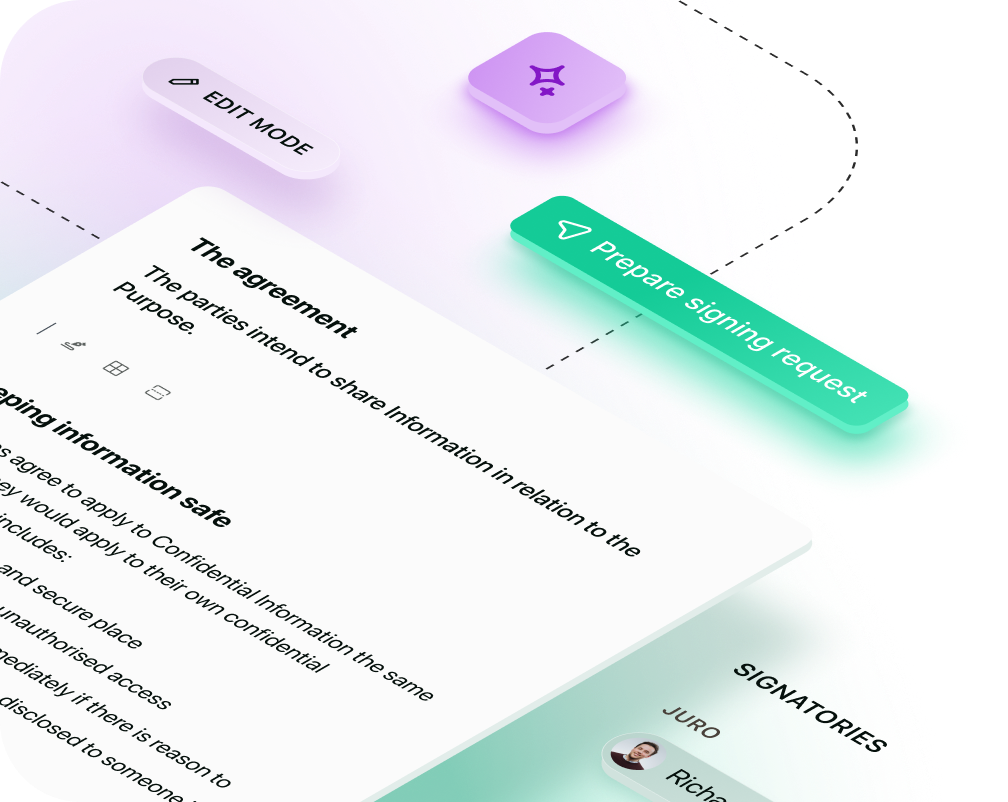Solutions
Customer Support
Resources
Use this secondment agreement to agree the terms of a temporary transfer of employee within or between an organization.




Streamline your secondment processes with this adaptable secondment agreement template, designed to facilitate the temporary transfer of employees within or between organizations.
A secondment agreement is a tripartite contract that temporarily transfers an employee (the secondee) from their original employer (the seconder) to work for a new employer (the host).
This type of arrangement allows for flexibility, skill development, and resource sharing without the need for permanent transfers.
Secondments can be internal, within the same organization, or external, between different entities. They are particularly useful for projects requiring specific expertise, filling temporary vacancies, or for developmental purposes.
Secondment agreements can be unilateral or bilateral. A unilateral agreement involves the seconder and the secondee, with the host organization accepting the terms set by the original employer.
In contrast, a bilateral agreement is negotiated between the seconder and the host, with the secondee's consent.
Understanding the nature of the secondment is crucial before finalizing the agreement to ensure all parties' expectations and obligations are clear.
.avif)
Secondment agreements are versatile and can be used in various situations, such as:
Secondment agreements are typically drafted by HR departments, legal teams, or external counsel. They require input from all parties to ensure the secondee's rights are protected, and the obligations of the seconder and host are clearly defined.
A comprehensive secondment agreement should cover:

The traditional process of creating and managing secondment agreements can be cumbersome, involving multiple drafts, negotiations, and approvals.
This can lead to delays and inefficiencies, particularly for organizations with frequent secondments.
Automation can simplify the creation and management of secondment agreements. By using a platform like Juro, organizations can:
Automating secondment agreements can lead to:
.avif)
Q: What happens if the secondee's role changes during the secondment?
A: Adjustments to the agreement may be necessary, with consent from all parties.
Q: Can a secondee refuse a secondment?
A: Yes, unless their original contract includes a secondment clause.
Q: Who is responsible for the secondee's performance?
A: This should be defined in the agreement, often it's a shared responsibility.
Q: What if the secondee is injured while at the host organization?
A: The agreement should clarify insurance and liability matters.
Q: Can a secondment lead to permanent transfer?
A: It's possible if all parties agree, but this should be a separate process.
Automate secondments with Juro
If you're looking to streamline your secondment process, consider a contract management platform like Juro. It can help you manage secondment agreements more effectively, freeing up time for strategic work.
Interested in learning more? Book a demo to see how Juro can transform your contract workflows.
Juro is the #1-rated contract platform globally for speed of implementation.


Juro embeds contracting in the tools business teams use every day, so they can agree and manage contracts end-to-end - while legal stays in control.
Book your demo